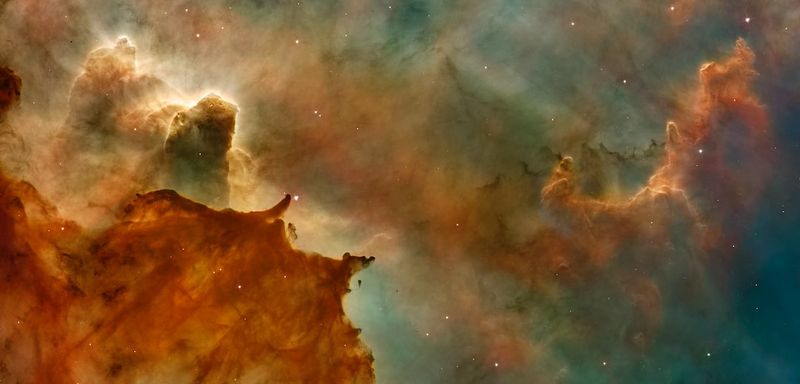- Get Ready for a Celestial Spectacle: Full Moons, Supermoons, Blue Moons, and Meteor Showers in August
- Astronomy enthusiasts and stargazers rejoice, as August promises to be a month filled with captivating celestial events. From full moons to supermoons, blue moons, and a meteor shower, the night sky will be a sight to behold. Let’s explore these cosmic phenomena and the best times to witness them.
- The Significance of Celestial Events
- Be Prepared for Celestial Marvels
- You might want to read !
Get Ready for a Celestial Spectacle: Full Moons, Supermoons, Blue Moons, and Meteor Showers in August
Astronomy enthusiasts and stargazers rejoice, as August promises to be a month filled with captivating celestial events. From full moons to supermoons, blue moons, and a meteor shower, the night sky will be a sight to behold. Let’s explore these cosmic phenomena and the best times to witness them.
The Sturgeon Moon: First Full Moon in August
The month kicks off with a significant event in the lunar calendar, the Sturgeon Moon. On August 1, the first full moon of the month will reach its peak at 2:32 p.m. According to the Old Farmer’s Almanac, if you miss the peak, fret not, as the moon will still appear full on August 2. The Sturgeon Moon derives its name from the tradition of catching giant sturgeon in the Great Lakes and Lake Champlain, which was easier during this time.
The Blue Moon: Second Full Moon in August
But the excitement doesn’t end there. August 30 will showcase the second full moon of the month, also known as a blue moon. This phenomenon occurs every two to three years when there are two full moons in a calendar month. The blue moon will reach its peak at 9:36 p.m., and it will also be a supermoon, making it appear up to 8% larger and 16% brighter than an average full moon. This blue moon will be the biggest full moon of 2023, coming closest to Earth than any other full moon this year.
Understanding Supermoons
Supermoons are a rare occurrence that adds to the allure of these celestial events. So, what exactly is a supermoon? As the moon orbits the Earth in an elliptical path, there are times when it comes closest to our planet. When a full moon coincides with this point, it is known as a supermoon. A supermoon can appear significantly larger and brighter than a regular full moon, with an increase of up to 8% in size and 16% in brightness. When seen on or near the horizon, a supermoon can give the illusion of being a massive celestial body.
Meteor Showers: The Perseids
In addition to the full moons, August brings the spectacle of the Perseids meteor shower. This annual event occurs when the Earth passes through the debris left by Comet Swift-Tuttle. As the tiny dust and particles from the comet’s tail enter our atmosphere, they burn up, causing the spectacular display of shooting stars. The Perseids are particularly popular due to their peak occurring on warm summer nights, making it easier to spot these fiery trails across the night sky.
The Perseids meteor shower will be active from July 14 to September 1, but the peak nights to watch will be August 12-13. From rural locations, onlookers can expect to see around 50-75 meteors per hour at maximum intensity, according to the American Meteor Society. These meteors, traveling at an astounding speed of 132,000 mph, create bright flashes of light and vibrant colors as they disintegrate high in our atmosphere. To locate the Perseids, look for the constellation Perseus in the northeastern part of the sky, just left of the Pleiades, also known as the Seven Sisters constellation.
Celestial Phenomena and Their Names
Throughout history, various cultures assigned names to full moons to help track the calendar and mark important events such as planting and harvesting times. The names given to full moons often embody the essence of that particular month. The Farmers’ Almanac mentions that full moon names traditionally referred to the entire lunar month in which they occurred.
Aside from the Sturgeon Moon, which signifies the abundance of giant sturgeon during this time, the August full moon also goes by the names Flying Up Moon, Corn Moon, Harvest Moon, Ricing Moon, Black Cherries Moon, and Mountain Shadows Moon. These names come from Native American, Colonial American, and European sources, each reflecting the distinct traditions and natural phenomena of those regions.
The Significance of Celestial Events
While these astronomical events provide us with awe-inspiring visuals and a chance to appreciate the immense beauty of the cosmos, they also serve as a reminder of our place in the universe. gazing at the night sky and marveling at the wonders of the universe can evoke a sense of wonder, curiosity, and awe, prompting us to contemplate our existence and ponder the mysteries of the cosmos.
Be Prepared for Celestial Marvels
To make the most of these celestial spectacles, there are a few things you can do to enhance your stargazing experience:
- Find a location away from city lights to minimize light pollution and maximize visibility.
- Check the weather forecast to ensure clear skies.
- Consider using a telescope or binoculars to get a closer look at the moon’s surface or the meteor shower.
- Bring warm clothing and blankets, as stargazing can get chilly at night.
- Patience is key! Sometimes it may take a while for your eyes to adjust to the darkness and spot meteors or other celestial objects.
Remember, these celestial events are natural wonders that have been captivating mankind for centuries. Take the time to step outside, look up, and appreciate the vastness and beauty of the universe.
As we gaze upon the night sky, we are reminded of how interconnected we are with the cosmos and how even the most magnificent celestial events can inspire our own human journey.

<< photo by NASA >>
The image is for illustrative purposes only and does not depict the actual situation.
You might want to read !
- Editorial Exploration: Examining the Timing and Phenomenon of the July 2023 Full Moon
Title: Unveiling the Celestial Wonder: The Timing and Spectacle of the July 2023 Full Moon
- “The Winning Collaboration: Jason Kelce and Fractured Prune Bring Sweet Victory to Philadelphia”
- The Astrological Marvel: July’s Supermoon Brings Earth Closer to the Cosmos
- The Significance and Celebration of Eid al-Adha 2023: Exploring the Start Date and Wishing You an ‘Eid Mubarak’




